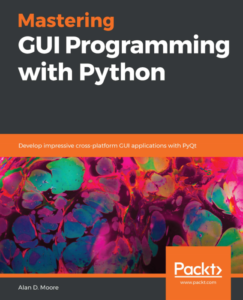As I’ve chronicled in “Replacing Windows 98…” and previous posts, I’m always interested in new tools that promise to imbue my mountain of mouldering beige boxen with a glorious desktop experience usable by the modern user. A commenter on that post suggested trying out Porteus, so I’ve been playing with it some this evening. While I haven’t time to work up a serious review, I thought I’d share my impressions of Porteus as a distro for rescuing older computers.
The scenario
Hardware
My “beater rig” that I use for testing is an 800MHz Celeron Coppermine system with 256 MB of RAM, which a gracious coworker gave me for free several months ago. Believe it or not, this system originally shipped with Windows XP Home (RTM), and was still running it when I received it. It currently runs Vector Linux 7.0 lite with a custom 3.7 kernel and Awesome WM.
Software
I downloaded Porteus 2.0, 32bit XFCE edition. The “Standard” 32 bit edition uses Razor-qt, which seemed to me from past testing to be a bit heavier than XFCE, so I went for the safer choice.
Porteus
Brief overview
Porteus is a Slackware derivative, based on Slack version 14. It’s not merely a respin, however, as it boasts some custom configuration tools and its own package format. Porteus is also designed specifically for live media booting, with a design similar to TinyCore Linux where the core OS boots from compressed files and changes (including package installations) are stored in a separate directory or file. A boot menu option allows you to do a “fresh boot” (ignoring the recorded changes), making it always easy to keep a running system even if you muck it up completely.
Apps and desktop
The Porteus XFCE desktop is pretty conventional; it defaults to a panel-on-the-top layout but is otherwise pretty conventional. The default look is simple yet attractive with some nice touches over the conventional XFCE desktop look. XFCE is at version 4.10, which is nice considering that even now many distros ship 4.8.
The application selection is pretty typical of a lightweight Linux desktop:
- Firefox (v.18) browser
- Pidgin instant messenger
- Abiword for documents
- Gnumeric spreadsheet
- Gnome Mplayer and Audacious for multimedia playback
- XFCE applications (Mousepad, thunar, Orage, etc) for most of the rest
Curiously, both XFCE4-terminal and LXTerminal were installed, and LXTerminal was default. The Porteus toolset includes a settings tool, a system information tool, and the Porteus package manager.
Noteworthy features
Porteus package manager
The Porteus package manager is just doggone cool. It’s actually six package managers tied up in one click-friendly front-end, allowing you to install packages not just from the Porteus repos, but also slackware packages, slackbuilds, Salix packages, RPMs, and Debian packages. Unfortunately my Internet connection on the test machine was down (not Porteus’s fault), so I couldn’t test this feature.
PXE server boot option
There’s an option to boot Porteus as a PXE terminal server, so that other systems on the same network could use it to also boot Porteus. I can’t say that any practical application of this features comes to mind (“QUICK! We have only minutes to turn all these hard-drive-less computers into a computer lab! What will we do???”), but I love PXE booting and I just think it’s cool. I think back in the day Knoppix had this feature too.
Run from RAM
Another boot-time feature allows you to copy the Porteus core to RAM. It requires 320 Mb of RAM for the 32-bit edition, which makes it a no-go for my hardware, or probably for anyone with less than a gigabyte who expects to actually do anything after the system is booted. Still, for making a RAM-endowed system run fast, seems quite useful.
Performance on my hardware
Porteus did OK running from my hardware; I ran it as a live system, which is what it’s designed for. Compared to Vector Linux lite, it’s a bit more sluggish, but that’s probably due to XFCE more than anything else. With IceWM or Awesome installed, performance would probably be comparable to VLL. Overall I’d subjectively put it as heavier than Slitaz, Puppy, and TinyCore, but definitely lighter than any Ubuntu respin.
The only recommended/supported install method for Porteus is a “frugal install”, which effectively makes it a live session running from the hard drive – in other words, the core files remain compressed and monolithic on disk, and changes are only written to a separate location. I’m slightly curious to know how this performs over the long-haul as the system changes more and more.
Conclusions
Is Porteus the long-sought hope for Pentium II relics? No, I think we can rule that application out. For those who want to have a portable install with persistence, it seems like a heavier, yet less squalid, alternative to TinyCore or Puppy.
For those wanting to resurrect old machines, Porteus seems best suited to an 8 to 10 year old machine, maybe that Pentium IV or Athlon XP with 512 to 1024 MB of RAM. There’s a lot of competition in that space (including most mainstream distributions if you pick the right desktop environment), and it wouldn’t be my go-to distro if I had such a piece of hardware to work with.
But in either scenario, the package manager looks to be the real killer feature of this distro; I’d like to spend some time testing it out and seeing what mixing various packages does to the stability, but if it does what it claims, it may just replace Vector on my Coppermine box.


Hello!
I am impressed! I never thought you’d double up and give it a whirr (so quickly)!
I feel bad now for not checking back earlier :/
My oldest machine is a celeron, and Porteus is fine on that – as you have rightly surmised it would be. I have never felt adventurous enough to tweak WMs, partly because the WM that came out of the box worked fine on my (admittedly) primitive hardware. Puppy’s small memory jwm is actually puppy’s USP, I think — I would be very interested to know how porteus + jwm works on your primitive boxes!
It is actually good to know that there are even more older machines working fine out there, and it speaks more about the nature of induced technical obsolescence in our society than those machines, that we cannot find good use for them. 🙁
>> I’d like to spend some time testing it out and seeing what mixing various packages does to the stability
Regarding this one, I can confirm here that I have actually tried mixing packages (debian and slacko) and I tell you that it works fine her for me (knock on wood!). So, go ahead and give Porteus a better whirl on your coppermine box.
I have worked
Well, I don’t always jump right on things like this, but I happened to find your comment just as I was looking for a fun project to take my mind off work for the holiday weekend.
I later tried Porteus on a machine with Internet, and I’ve had trouble getting the package manager to work as it seems it should. Seems like the slack repos should have more packages, but I couldn’t find (for example) Emacs anywhere but in the Debian repos (and a machine without Emacs is not much of a machine for me). I must be doing something wrong, but I’m not sure what it could be.
Re: emacs,
I too remember, having to download the slackware packages first. It downloads approx 70MB worth of data. You can always delete the package list if you don’t want to do new installs. That’s what I did. Then, you’ll find “emacs” when you search for modules. You have to choose the option of “download and convert”. Voila emacs 24 working perfectly on Porteus.
I’ll get back to my notes and revert back to you again with clearer steps, if what I wrote above is hard to follow. Just let me know.
Also, their “mini chat” on the forums page forum.porteus.org is very good. You’ll have to register an account before being able to post in the chat window though.
It’s tricky getting your way around Porteus to begin with, but the chaps are very friendly and helpful, and once you get your bearings, I found it a beauty to run. The OS gets out of the way and lets you do your stuff. I’ve actually started using KDE as I found that they’ve tweaked it to make it look real good.
It’s me again. I thought I’ll write that brain dump comment more clearly for you!
1. Open porteus package manager
2. Choose Slackware (2nd option below) and “Search slackware” (It will ask to download the package db and create a local version of it . Accept it)
3. Once it completes, click “search”, and look for emacs. You will get emacs 24.2
4. Select it, check the box “convert after download” and “Download Now”.
5. Accept the dependency resolutions.
6. Once all this finishes, click on “Porteus” I button and “Activate module”. Choose emacs from the list of modules. Accept all the screens. There’s a counter intuitive “Download now” button in the dependencies dialogue box. Click that. You’ll get the “x/a/z was installed successfully” series of messages, and emacs will be added to the “Development” menu for you.
Thanks, I’ll give this a shot.
I run Porteus with the Razor-Qt 32-bit version from a USB on the windows laptop I use for business trips. I really enjoy it. The porteus package manager is quite useful, though the one debian package I tried to install appeared to miss a dependency. The slackware installations all have worked well. What impresses me is that the distro lives up to the lightweight promise–it runs from USB as quickly as if it were on a hard drive, in terms of the user experience, whatever the actual clock might show. I miss a couple of packages like Gnofract 4 I use in Fedora, and I must learn to convert rpms to porteus packages. But it is great that I can have a robust Linux experience without having to do a full install or dual install.